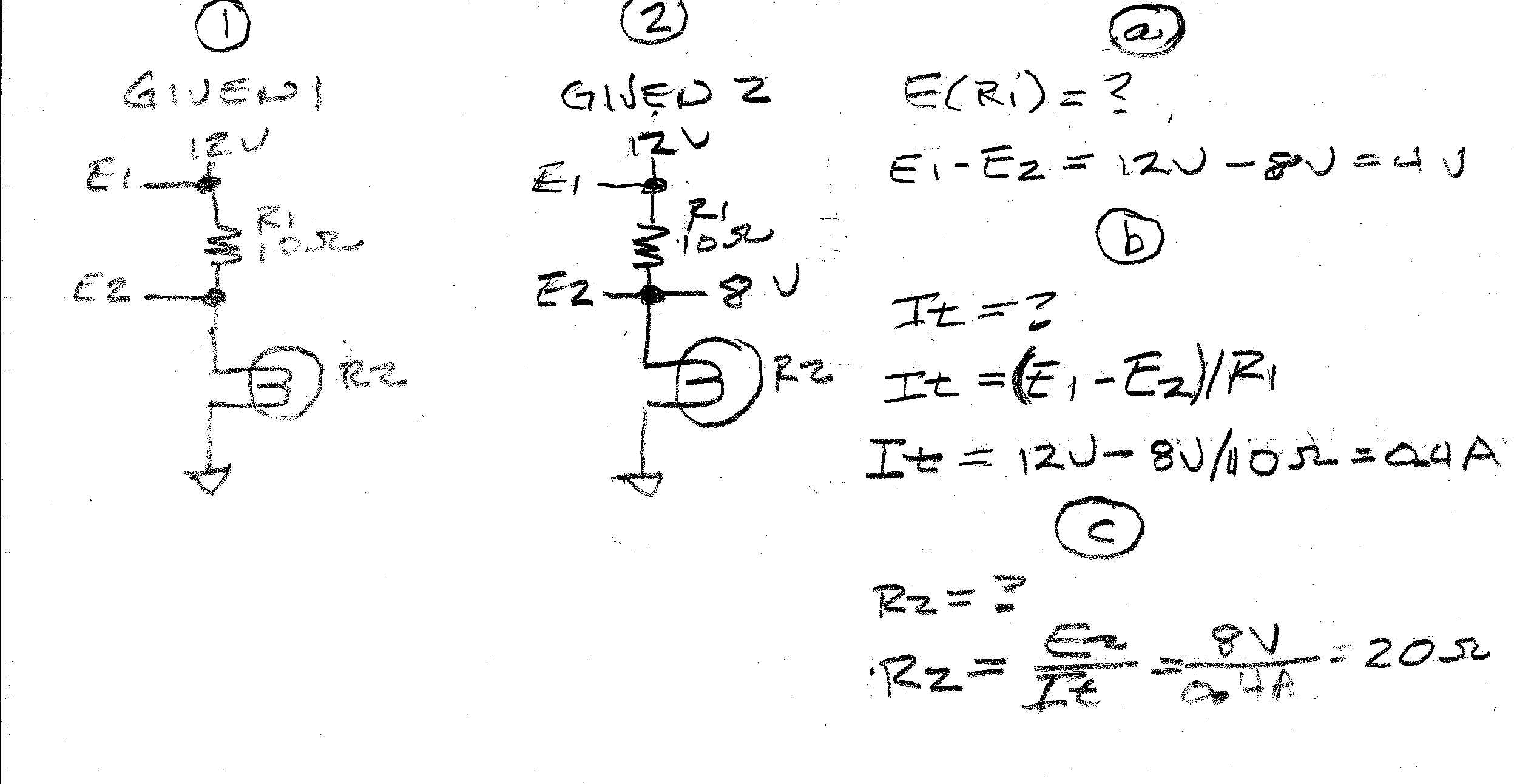I am doing some practice problems based on what I learned today in lecture. However, I am stuck on this problem:
A 10Ω resistor is in series with a bulb and a 12V source.
a. If 8V is across the bulb, what is across the resistor?
b. What is the current in the circuit?
c. What is the resistance of the bulb?
Where would I begin solving what voltage is across the resistor? I do not the current, nor do I have the means to find it (that I can see), thus I can not find what voltage is dropped. I am not sure if I can assume the bulb has no resistance, in which case I can solve the problem easily.



